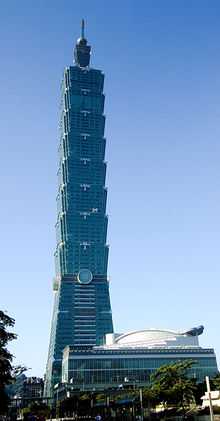Hsinchu Science and Industrial Park

The Hsinchu Science and Industrial Park (Chinese: 新竹科學工業園區; Hanyu Pinyin: Xīnzhú Kēxué Gōngyè Yuánqū; Tongyong Pinyin: Sīnjhú Kēsyué Gōngyè Yuáncyū) is an industrial park established by the government of the Republic of China (Taiwan) on December 15, 1980 to foster scientific and technological development. It straddles Hsinchu City and Hsinchu County in Taiwan.
Hsinchu Science and Industrial Park was founded by Kwoh-Ting Li, former Finance Minister of the Republic of China. Inspired by Silicon Valley in the United States, Li consulted Frederick Terman, on how Taiwan could follow its example. From there, Li convinced talents who had gone abroad to build companies in this new Silicon Valley in Taiwan. Among those who returned is Morris Chang, who later leads the Industrial Technology Research Institute (ITRI) and founded the TSMC. Li also introduced the concept of venture capital to the country to attract funds to finance high-tech startups in Taiwan.
Overview
Hsinchu Science Park (HSP) is now one of the world's most significant centers for semiconductor manufacturing. More than 400 high-tech companies, mainly involved in the semiconductor, computer, telecommunication, and optoelectronics industries, have been established in the park since the end of December 2003.[1] Its 400 technology companies accounted for 10% of Taiwan's gross domestic product in 2007. It is home to the world's top two semiconductor foundries, Taiwan Semiconductor Manufacturing Company (TSMC) and United Microelectronics Corporation (UMC), both of which were established at the nearby Industrial Technology Research Institute. Taiwan is the only country that possesses a professional division-of-labor system in the semiconductor industry and also has the highest density of 12-inch wafer-producing fabs, most of which are based in the park.[2] Next door to the science park are two of Taiwan's science and engineering powerhouses, National Chiao Tung University and National Tsing Hua University, and the National Space Organization, the Taiwanese space agency, is located in the park. There is also a science-themed amusement park nearby.
There were local residents' protests against water and air pollution. The Park's industrial wastewater treatment plant[3] began to operate in 1986, and environmental protection department monitors the air quality around the Park.
Locations
Currently, the Hsinchu Science and Industrial Park covers six locations:[4]
- Hsinchu Science Park in Hsinchu City and Hsinchu County
- Jhunan Science Park in Zhunan Township, Miaoli County
- Longtan Science Park in Taoyuan City
- Tongluo Science Park in Tongluo Township, Miaoli County
- Yilan Science Park in Yilan County
- Biomedical Science Park in Zhubei City, Hsinchu County
Major companies located in the park
- Acer Inc.
- Axtronics Inc.
- Alpha Networks Inc.
- AU Optronics
- ChipMOS TECHNOLOGIES, LTD. (IMOS)
- D-Link
- Chimei Innolux
- Elan Microelectronics Corporation
- Giga
- Holtek
- Lite-On
- Logitech
- Macronix International[5] (MXIC)
- MediaTek
- Microtek
- MiTAC
- MStar Semiconductor
- MA-tek Inc.
- Nuvoton Technology Corp.
- Optodisc
- Philips
- Powerchip Semiconductor[6] (PSC)
- ProMos Technologies[7]
- Realtek
- SMOBiO Technology, Inc.
- Sunplus
- Silicon Integrated Systems
- Tecom - Tecom Co., Ltd
- TSMC - Taiwan Semiconductor Manufacturing Company Ltd.
- United Microelectronics Corporation
- Vanguard International Semiconductor Corporation
- Winbond
- ZyXEL[8]
See also
- Business cluster
- Economy of Taiwan
- Mega-Site
- Southern Taiwan Science Park
- National Experimental High School: A K-12 school established to provide special education opportunity to personnel of Greater Science Park Area.
References
- ↑ Central News Agency (2007-06-26). "Hsinchu Science Park export value grows, large growth for optoelectronics". Department of Investment Services (Taiwan) (MOEA).
- ↑ National Science Council (2005). "Hsinchu Science Park". Government of Taiwan. Retrieved 7/12/2008. Check date values in:
|accessdate=(help) - ↑ Introduction to Wastewater Treatment Plant of Science Park
- ↑ http://www.sipa.gov.tw/english/index.jsp
- ↑ MXIC.com.tw
- ↑ PSC.com.tw
- ↑ Promos.com.tw
- ↑ National Science Council (2005). "Hsinchu Science Park". Government of Taiwan. Retrieved 7/12/2008. Check date values in:
|accessdate=(help)
External links
- Official site
- Official site map
- Sale of Science Parks by Industry
- Expenditure of Science Parks by Industry
- Personal of Science Parks by Industry
- Research Level of Personal of Science Parks by Industry
- Researchers of Science Parks by Industry and Age Group
- Productivity of Science Parks by Industry
| |||||||||||||||||||||||||||||||||||||||||||||
Coordinates: 24°46′48″N 121°00′49″E / 24.78000°N 121.01361°E
